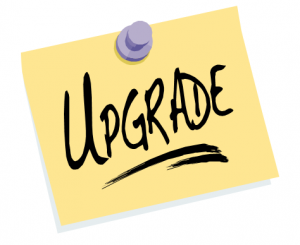Upgrading Your Workforce
One of the main responsibilities of human resources departments is to create and maintain a better workplace. Upgrading the workforce entails a number of activities that should accommodate the ergonomic and physical needs of employees. It should also entail the creation of a more collegial work environment to enhance skills, creativity, well-being and general satisfaction levels among the employees.
While human resources strategy differ depending on the type of organization, work force size and the current business environment, efforts to upgrade the workforce should essentially focus on improving employee motivation, well-being and engagement of majority of the employees in meeting the set organizational goals and aims.
What should be done?
Training Needs Assessment
Upgrading your workforce starts with identifying the performance needs, knowledge, abilities and skills of a group of employees. This process can prove may prove effective to small and mid-sized organizations. It is an important activity since it helps in the identification and allocation of adequate resources needed to achieve organizational mission, improve quality of products and services as well as the general productivity of the firm. Need assessment also helps to identify the existing gaps between current performance and the expected future performance thus helping the firm to position itself appropriately.
Levels of a Training Needs Assessment
Organizational assessment: This involves evaluating the level of organizational performance through identifying the technical skills or experience, knowledge and abilities required in the organization. This process entails understanding the internal and external environment and how it determines the market position of the firm. Organizational needs assessment creates a new understanding of the changes in the political, technological, demographic, social, cultural and economic aspects of the society.
Occupational assessment: This entails a critical examination of the existing occupational opportunities and gaps in relation to the skills, abilities, and knowledge of a certain group of employees. At this level, new mechanisms for eliminating such discrepancies are identified and implemented.
Individual assessment: This involves looking at the individual performance of each employee and analyzing some of the strong points and capacity to the present job status. This is important since it helps to identify training needs of your employees.
Work skill training
While workforce training is expensive, when such a process is well-designed and executed, it can positively impact on the competitive success of the organization. The training needs of each employee should be identified and assessed in terms of their importance to the organization. Encouraging strong interpersonal relationships among staff and management can help to foster the outcomes of training sessions. This is because, such activities offer an opportunity where employee opinions, skills and talents are recognized and valued by the rest of the team.
Executive training
One of the main purposes of executive training is to enhance promotion opportunities for the employees. Providing ongoing training and development opportunities within the organization can help the employees to do better. Executive training also helps the employees to collaborate through networking hence creating an environment of mutual trust, confidence, job satisfaction, innovation and a sense of job security.
Track your career path and training needs with www.sains2u.com







